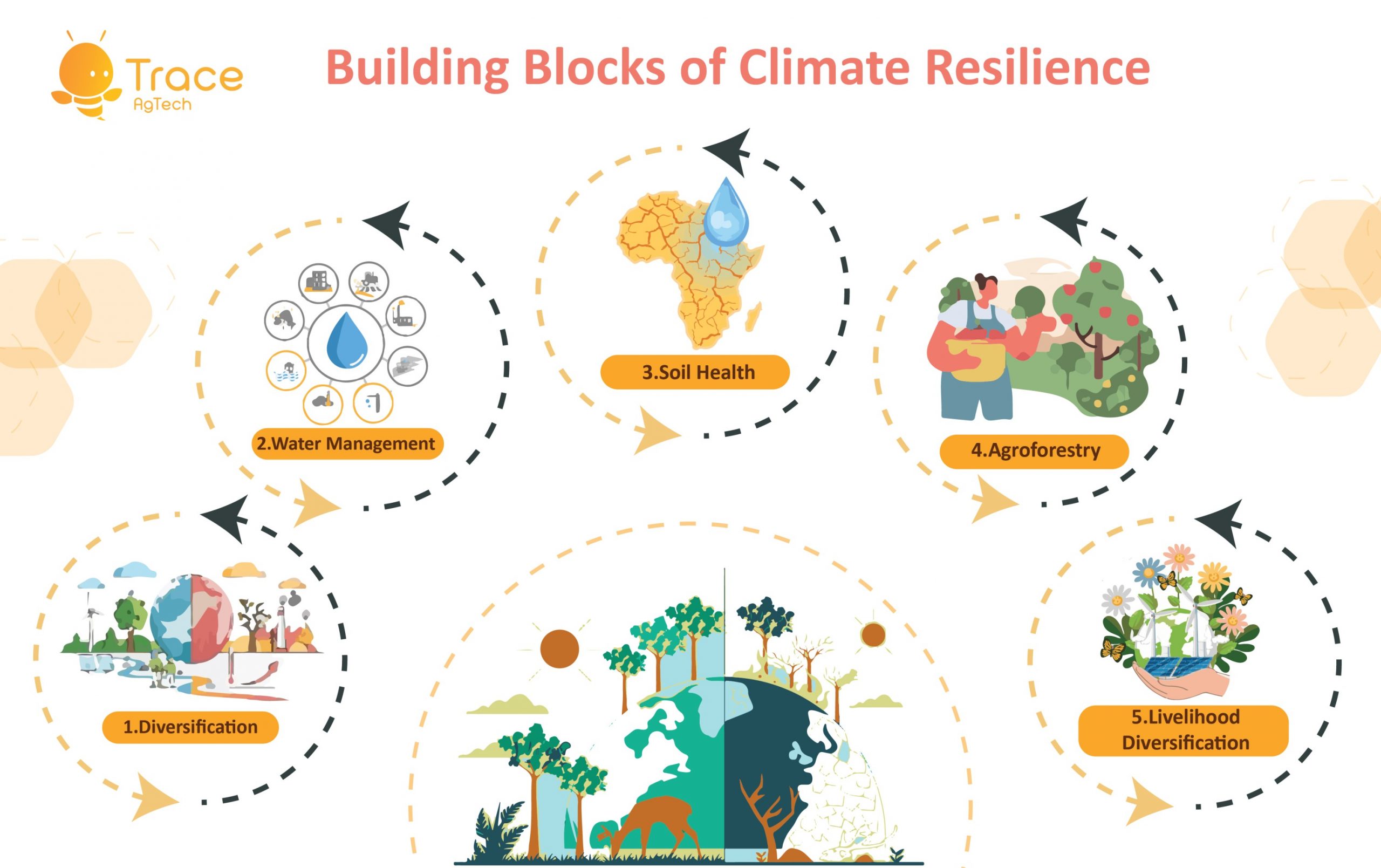Climate Resilience in Agriculture: Nurturing Sustainability in an Unpredictable World
Climate change is reshaping our world, and agriculture stands at the frontline of this transformation. As global temperatures rise, weather patterns become erratic, and extreme events such as floods, droughts, and heatwaves become more frequent. These changes pose significant challenges to farmers worldwide, threatening food security and livelihoods. In response, the concept of climate resilience in agriculture has emerged as a critical strategy to adapt to these challenges sustainably.
Understanding Climate Resilience
Climate resilience in agriculture refers to the ability of farming systems to withstand and recover from climate change impacts while maintaining productivity and ecosystem services. It encompasses a range of strategies and practices that build the capacity of farmers and farming systems to cope with climate-related stresses and shocks.
Building Blocks of Climate Resilience

-
Diversification
One of the fundamental principles of climate resilience is diversifying crops and livestock. Growing a variety of crops increases resilience to climate variability, pests, and diseases, ensuring food security even in challenging conditions.
-
Water Management
Efficient water management is crucial for climate resilience. Techniques such as rainwater harvesting, drip irrigation, and soil moisture conservation help farmers cope with droughts and water scarcity.
-
Soil Health
Healthy soils are more resilient to climate change. Practices like conservation agriculture, cover cropping, and composting enhance soil fertility, structure, and water-holding capacity.
-
Agroforestry
Integrating trees into agricultural landscapes through agroforestry enhances biodiversity, improves soil health, and provides additional sources of income, contributing to climate resilience.
-
Livelihood Diversification
Beyond agriculture, diversifying livelihoods through off-farm income sources reduces vulnerability to climate-related risks.
Technological Innovations for Climate Resilience
-
Climate-Smart Agriculture (CSA)
CSA integrates sustainable practices that increase productivity, enhance resilience, and reduce greenhouse gas emissions.
-
Precision Agriculture
Utilizing technologies like drones, sensors, and data analytics, precision agriculture optimizes inputs, minimizes waste, and enhances resilience to climate variability.
-
Biotechnology
Biotechnological innovations such as genetically modified crops that are drought or pest resistant can enhance the resilience of crops to climate change impacts.
Policy and Institutional Support
-
Risk Management
Governments can support farmers by providing access to weather information, insurance schemes, and early warning systems to manage climate-related risks.
-
Capacity Building
Building the capacity of farmers through training programs and extension services can help them adopt climate-resilient practices.
-
Research and Development
Investing in research to develop new crop varieties, technologies, and practices that are more resilient to climate change is essential.
Conclusion
Climate resilience in agriculture is not just about adapting to climate change but also about ensuring sustainable food production for future generations. By embracing diverse strategies, technologies, and policies, we can build a more resilient agricultural sector that can thrive in an unpredictable world.


Any comments?